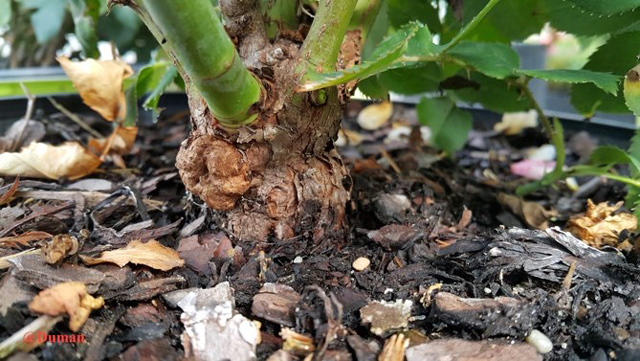
Kamil Duman, Susannah Wright, Fanny Iriarte, Barron Riddle, Gary Knox and Mathews Paret, University of Florida – NFREC, Quincy, FL
For rose nurseries, and commercial landscapers, each of the many rose diseases are as important as the others. Crown Gall, however, is one of the most unsightly of the many rose diseases. The disease got its name from the large tumor-like swellings (galls) that typically occur at the crown of the plant, just above the soil line. Agrobacterium tumefaciens (updated scientific name Rhizobium radiobacter), is a bacterium that resides in the soil and causes crown gall disease.
In recent years, researchers at the University of Florida have been observing an increase in rose crown gall disease in Florida. To further understand how widespread this issue is on roses, a research team conducted multiple field surveys in 2017, which led to the discovery of many cases of crown gall disease on different rose varieties in both private and public facilities. Some of the key aspects nursery growers and landscapers should know about crown gall disease are summarized in this article.
Rose Crown Gall Symptoms
Galls range in size from as small as 1/4 inch to several inches in diameter. The gall is an overgrowth of host plant tissue that typically forms at the soil line, but can also form on branches or roots. Galls are initially white, spherical, and soft but darken with age as outer cells die. Galls can either be almost entirely on the surface of the plant and easily detected or almost indistinguishable from normal plant tissue except for its enlarged appearance. The bacterium, which causes Crown Gall disease, survives and persists in the soil for up to three years. It can invade recent wounds on the branches or roots. Swelling can be seen as early as 14 days to as long as 6 months following entry of the bacterium into the plant. The tissue near the gall can be damaged due to rapid cell enlargement. If vascular tissue is affected, wilting can result from the restricted water movement.
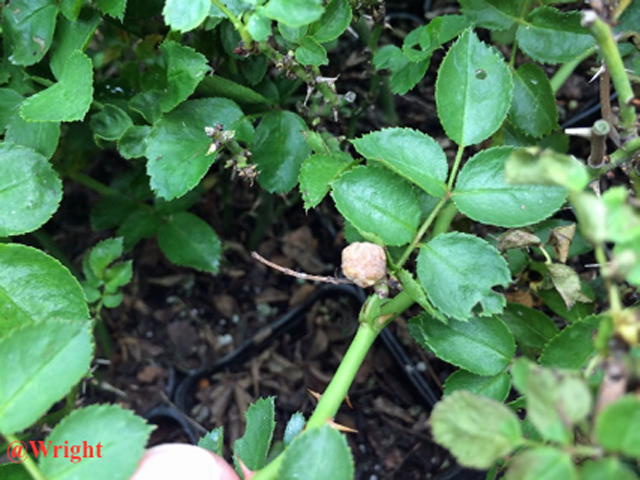

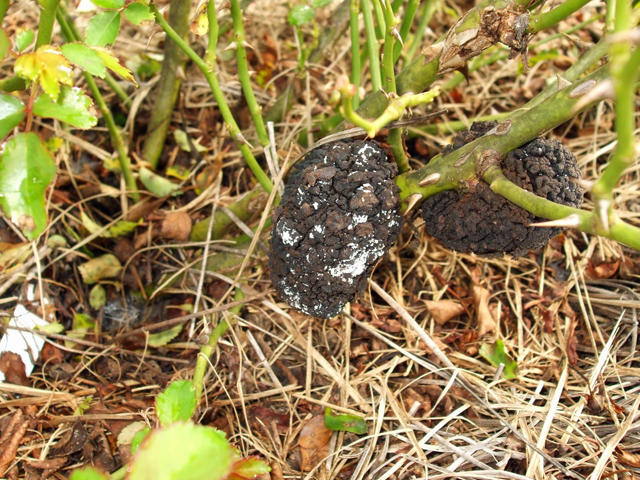
The Bacterium that Causes Crown Gall
Agrobacterium enters the plant mostly from the soil through wounds on the roots, lower stem or from the branches during plant pruning. Symptoms are caused by the insertion of a small segment of DNA (known as the T-DNA), from a plasmid into the host plant cell, which is incorporated into the plant genome. Once the plasmid integrates with the plants own DNA, the altered plant cells start dividing rapidly and uncontrollably, and the root or stem develops a tumor-like swelling. Galls can range from pea size to softball size. Tiny cracks from freezing temperatures or wound sites can be the site of gall formation. Once the wound compounds are generated, the bacteria detach from the xylem cell walls and are carried upward with water during evapotranspiration to the wound site where they initiate galls. One of the common ways the disease spreads is by pruning nearby healthy plants with the same un-sanitized pruning tool used on an infected plant.
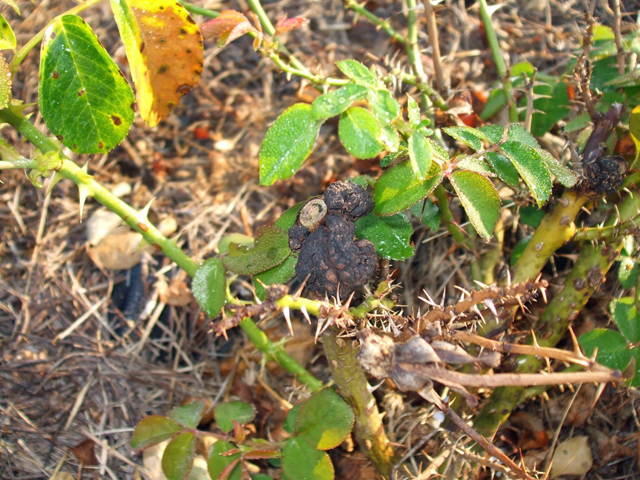
The crown gall bacterium is a soil pathogen, which means the main inoculum source is in the soil. The bacterium can overwinter in infested soils, where it can live for several years. The bacterium can spread easily during field preparation, pruning and irrigation. Insects, nematodes and grafting materials can also transfer the bacterium.
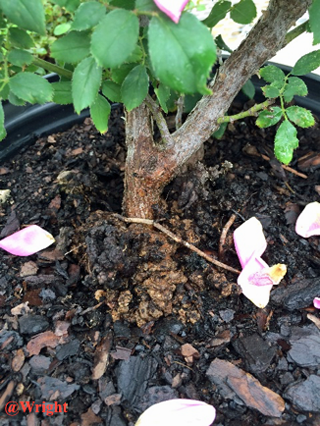
Crown Gall Management Recommendations
- Plant only disease-free roses. Check very carefully before you buy plants for any kind of galls in the crown or branches
- Plant in clean soil (Avoid areas with a history of crown gall infestation)
- Avoid areas with heavy infestations of root-attacking insects and nematodes
- Select well-drained soil and irrigate from clean water sources
- Keep grafts and buds well above the soil line
- Destroy diseased plants as soon as you notice them to avoid cross-contaminating other plants.
- Do not keep infected plants with healthy plants, as the likelihood of accidental transmission through pruning is high
- Avoid mechanical injury to plants from tillage and hoeing
- Provide winter protection so that the bark does not crack
- Disinfect pruning tools between plants. Disinfest budding/grafting tools before and after use. Bleach (10%; equivalent to 0.6% sodium hypochlorite), or quaternary ammonium-based sanitizers are effective disinfectants. Make sure to prepare fresh stock routinely
- If crown gall plants are discovered, please contact your county extension agent for information. Agents can submit samples to the Plant Pathology Lab at the University of Florida-NFREC for disease confirmation and additional site-specific management recommendations.
 0
0
